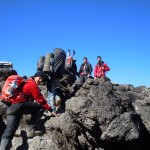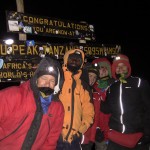I like to refer to myself as a Contemplative Activist or an Introvert Extrovert. Perhaps these monikers simply describe the inner ping pong match going on inside of me. One part of me is your classic A personality type who derives great satisfaction from working hard, multitasking, and filling my day with productive activity. I feel good about myself when I get a lot done in a day. I work well under pressure, and love juggling a few irons in the fire. I like the buzz from adrenaline I get when going at mach speed. I find that keeping busy with alot of stuff may at times be the default mechanism I subconsciously use to validate my existence, or the way I find my sense of worth from what I do. I get restless and feel guilty if I’m just sitting around when there is work to be done. Some days I feel like an activity and adrenaline junkie craving a fix!
The other part of me hates to be living life running around like a chicken with my head cut off. I chafe at the idea of cramming my week so full of meetings and events that I feel like I’m rushing from one thing to another with no room for interruptions. I rue the days when my schedule is so full that there is no white space on my BlackBerry calendar. I long for time to linger with people, time to slow down, to sit, and to smell the proverbial flowers.
I crave simplicity, long for silence, and need solitude. In these moments of living in the fast pace of city life, I dream of fleeing to the country, a secluded island or joining a monastery…though I would probably only last for a month at best.
Do you relate? There are many days I feel inwardly conflicted. It is not wrong to be busy with the right things, and to work hard. I love that feeling of accomplishment at the end of the day when I can cross out a bunch of things on my ‘to do list’. Yet to be doing so in such a manner that I run my emotional, physical, and spiritual motors at such high rpm’s, so that I’m constantly red lining on my internal tachometer while neglecting the warning lights that start flashing on the dash, is setting myself up to crash and burn. Those warning indicators are things like emotional toxicity, being wound so tight that at the slightest provocation we snap, and the loss of joy. This is not the way God designed us to live.
Could it be that we can actually be more effective and productive in our personal and work lives by practicing a Sabbatical lifestyle? I experienced the truth of this counter cultural way of living while tree planting one summer in northern B.C. The foreman of our crew instituted the pattern of taking every Sunday off to rest. Now in the tree planting world this seemed like a crazy idea. Since the planting season was short, most crews would plant 7 days a week till they finished a plantation, so that they made as much money as possible in the shortest period of time. For most crews the only time off was the travel time to get to the next plantation and maybe a day to shop for supplies. Rival crews would shake their heads at us in disdain with a knowing smirk when we told them that we wouldn’t be planting on Sundays. They thought we were foolish. Yet each year our foreman’s crew planted more trees, and made more money than any of the other crews in the company.
So what is Sabbath living?
Sabbath living is the ceasing from our normal routines of work to practice the rhythms of rest, replenishment, recreation, and reflection. These habits may include sleep, reading, journaling, contemplative or soaking prayer, playing a sport, taking a walk in nature, or enjoying a hobby that you normally don’t have time for. This allows us to recharge or regenerate so when we return to our work we are more productive for a longer period of time. It is learning to ‘be’ alongside or before ‘doing’.
The Sabbatical disciplines of silence and solitude allows our pain, brokeness, and unhealthy motivations to surface. By choosing to pause from our work we enter into a detoxing from our addictions to frenetic activity, to adrenaline fixes, to psuedo-intimacy through porn, or to the need for people’s approval as ways we attempt to medicate, anesthetize, or bury our pain. We get healed up and become whole again.
Hillary of Tours, a mystic, wrote: “Many Christians suffer from a blasphemous anxiety to do God’s work for Him.” Most of us suffer from an over inflated view of our importance in which we don’t think we have the time to practice Sabbatical living. There is so much to get done, and if we don’t do it who will? We walk out humility when we realize that God does not need us to get His work done, but enjoys our presence and partnering with Him. Even while we are resting, He is able to accomplish much without us!
The Greek word for authority in Luke 9:1 is ‘exousia’ which means to receive delegated influence, strength, and competency from being with the one who has all authority: Jesus. Through walking out Sabbath we are infused with the life of Jesus, and His power to do His work!
Suggested Personal Health Inventory:
- Ask those who you live close to if you are showing the signs of being stressed out. or on the verge of burning out? (Clues: being overly irritable or hyper sensitive, lacking compassion, loss of mojo, not sleeping well, being emotionally drained and not rebounding as normal, negative talk or depression, dreading the work you normally enjoy)
- What is your heart condition?
- What are the addictions I use to cover over or medicate my pain?
- Do I struggle to say no to people and their expectations?
- Do I carve out time to rest, reflect, and recreate?
- What does that look like daily, weekly, and monthly?
Ideas for Sabbatical Living:
- Sabbath is a way of life where we practice certain rhythms or disciplines daily, weekly, monthly, yearly, and every 7 years.
- REST: Daily take a half hour to be in silence and solitude. I find a walk in a park or finding a quiet, bright space in my house early in the morning, or late at night, to be the best ways to find silence and solitude in the city. During this time, relax and soak in God’s presence. Let Him pour His love and life into you. Resist the urge to formulate prayers for people. Let His peace soak into every pore of your being!
- REFLECT: Ask these three questions: What do I really want or what matters to me? What do I fear? What is God saying to me? Take some time to reflect on the subject of Sabbath rest by reading a short book such as The Way of the Heart by Henri Nouwen, or contemplate on these Scriptures: Lev. 25, Luke 4: 42-44; 5:15-16, Heb. 3:7-4:12
- RETREAT: Take a day or half day and get out of the city by going to a retreat center, or a favorite place in the outdoors. Don’t be surprised if you end up sleeping for half the day.
- RECREATION: If you are in any kind of people work, it is recommended that you take three weeks of vacation in one block every year where you get away. It takes 2 weeks to unwind and the third week to fill your tanks up. Spend time playing, reading, relaxing, and enjoying a hobby. For me that’s fishing!
- RE-TOOL and RE-CALIBRATE: If at all possible, plan for a 1-3 month, longer if possible, Sabbatical from work. During this time, spend a couple weeks in a monastery or guided retreat, take a course or two, read some books you haven’t had time to read, travel to some places or people you would like to visit.
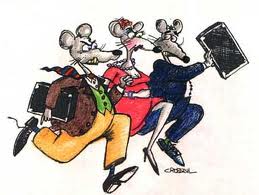









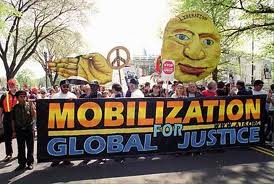

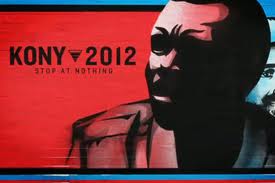





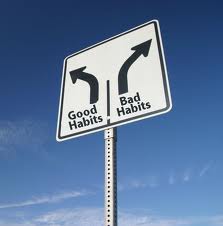
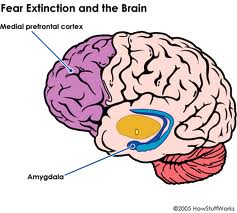
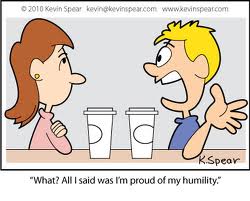














 IN WHAT AREAS OF YOUR LIFE DO YOU NEED TO SLOW DOWN? WHERE IS THE TEMPTATION IN YOUR LIFE TO TAKE SHORT CUTS THAT WILL COST YOU IN THE LONG RUN?
IN WHAT AREAS OF YOUR LIFE DO YOU NEED TO SLOW DOWN? WHERE IS THE TEMPTATION IN YOUR LIFE TO TAKE SHORT CUTS THAT WILL COST YOU IN THE LONG RUN?
